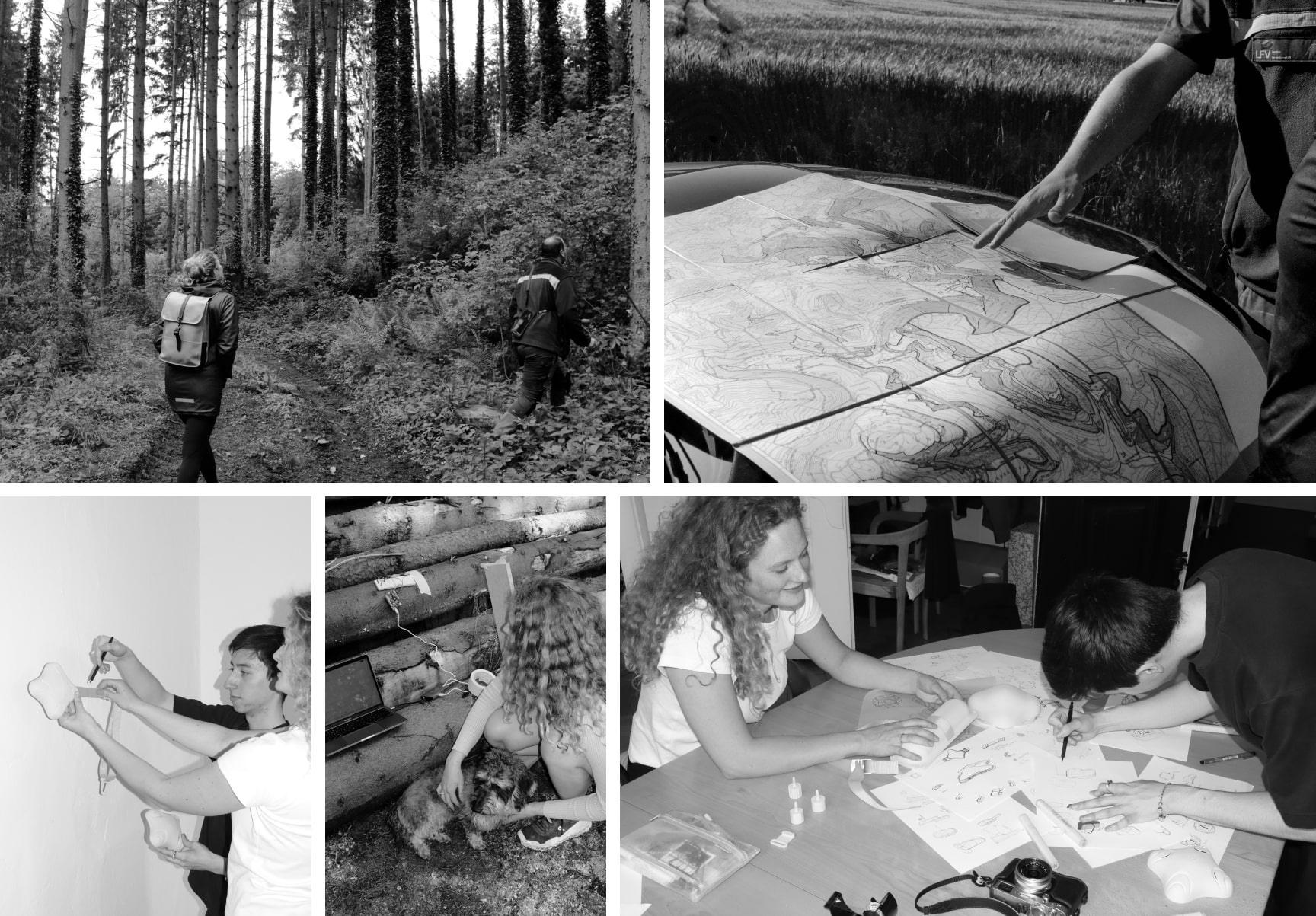
amber


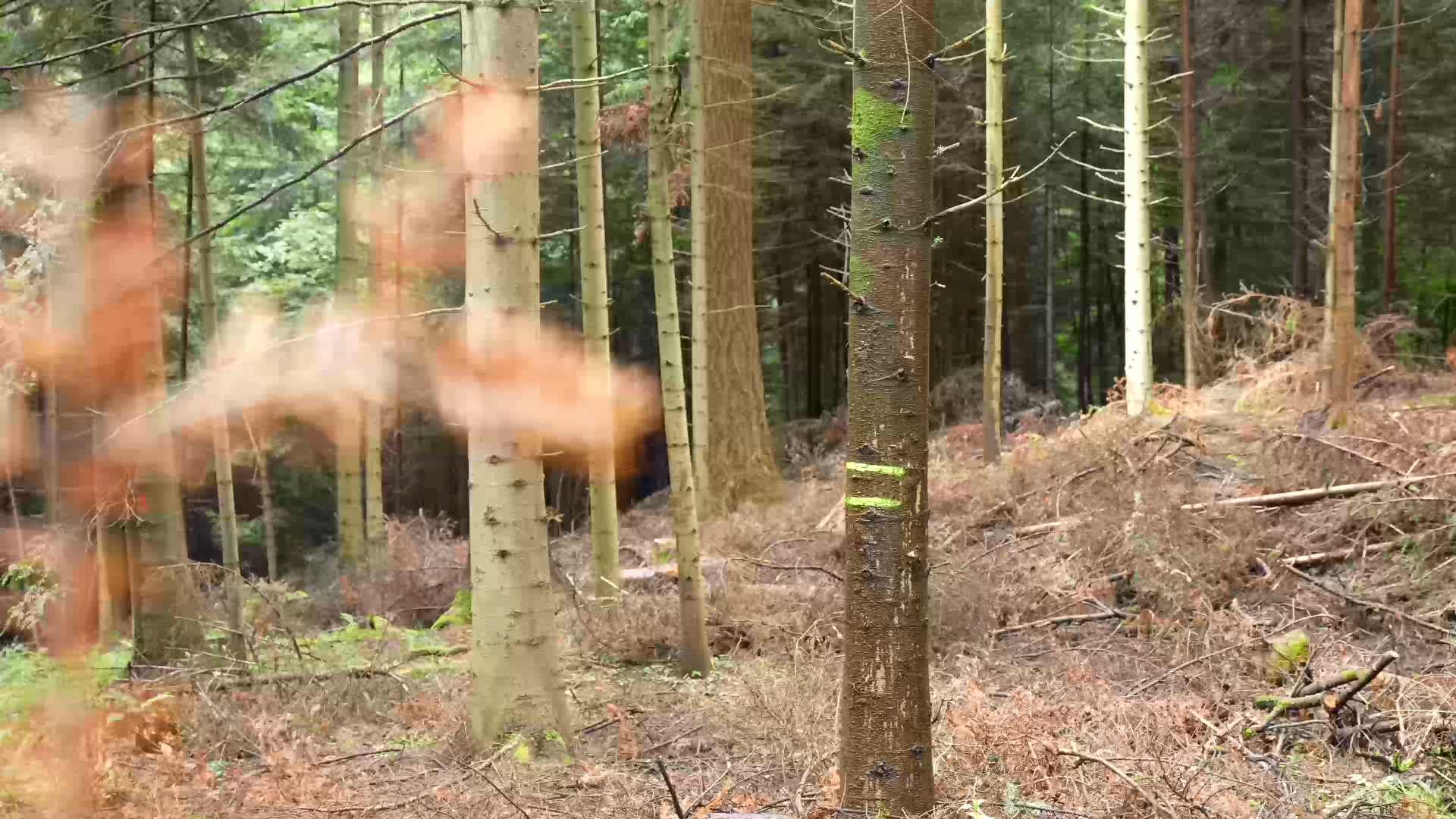
saving forests by
listening to nature.
80% of timber damage is
caused by the bark beetle.
since 2018, 500,000 hectares of forest have been lost due to excessive bark beetle activity. foresters make daily efforts to detect the beetles and address the issue before the next generation emerges and infests new trees.
however, identification is challenging and time-sensitive, as visual signs often appear too late, leading to large-scale tree removal. amber records natural sounds throughout the year, filters them with ai and detects an infestation of bark beetles before it becomes externally visible.

using sound as a
natural indicator.
filtered with ai.
making use of the
field of bioacoustics.
depending on the season, amber uses natural indicators to identify infested trees. in summer, it's deployed in high-risk areas like slopes, south-facing zones, or dry forest edges. it's attached to a reference tree likely to be first infested due to traits like crooked growth, small crowns, or old age.
in winter, when bark beetles are inactive, amber measures woodpecker feeding behavior, their natural predators. using ai, it identifies specific pecking sounds and locates the source through trilateration. multiple devices record woodpecker sounds, calculate time differences, and use gps data to pinpoint the location.
the ai performs calculations locally on the microcontroller, sending only positive identification data to the forester to minimize transmission costs and storage needs. devices use a LoRa network for efficient, long-range communication, with each device acting as a hotspot to cover connectivity gaps. only the master node connects to the mobile network via a sim card to transmit data to the forester.
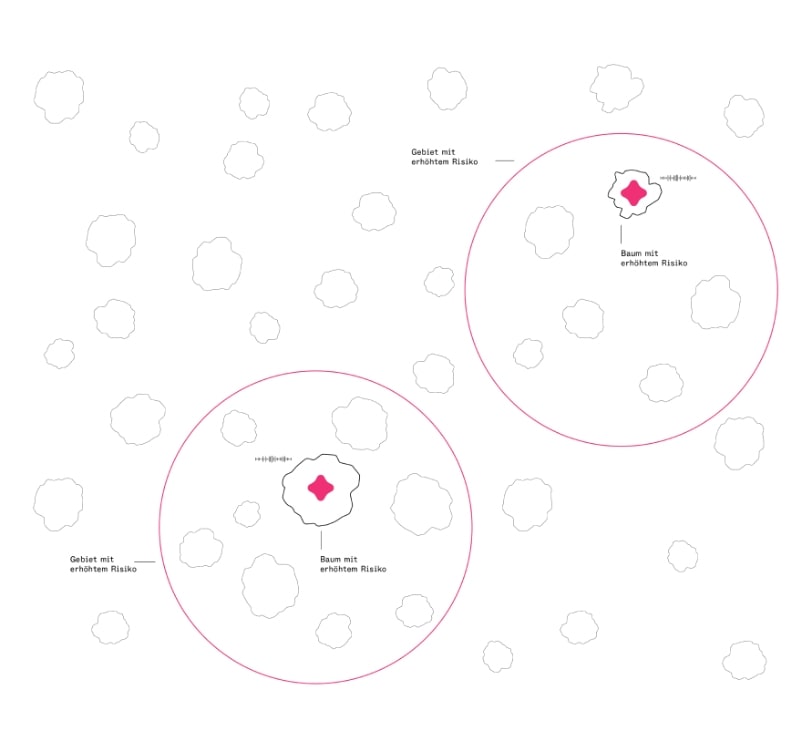
amber detects active
beetles during summer.
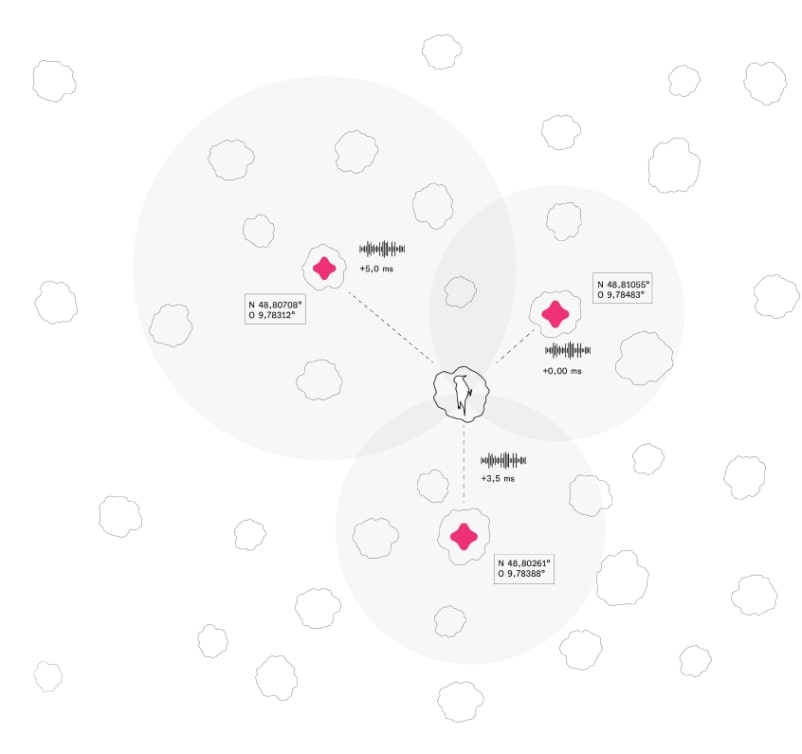
amber records wood-
peckers during winter.
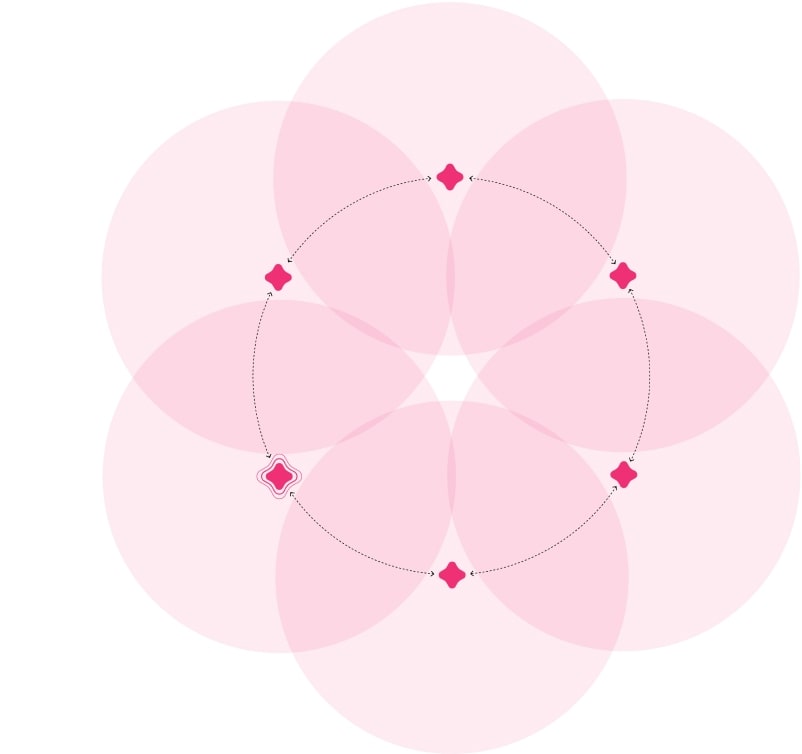
communication works
via a lora network.
designed for the forest.
from the forest.
bio-based plastic
and old climbing ropes.
amber is attached to trees with a needle that detects beetle vibrations via a piezosensor. the weatherproof, directionless shell made of lignin-based bioplastic is sealed with a press fit over a silicone ring and secured by a rope mechanism, using a retired climbing rope. a sliding knot presses the shells together, securing or loosening the device without leaving excess rope that could harm wildlife.
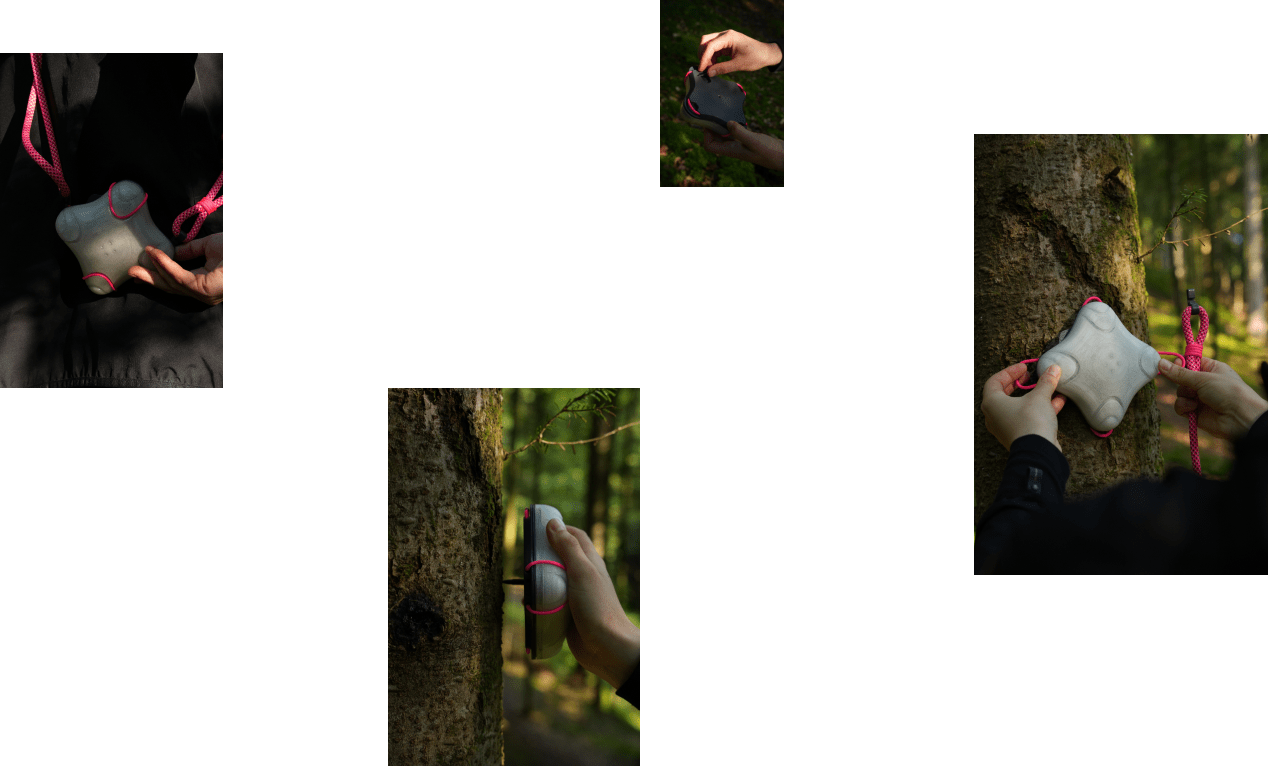
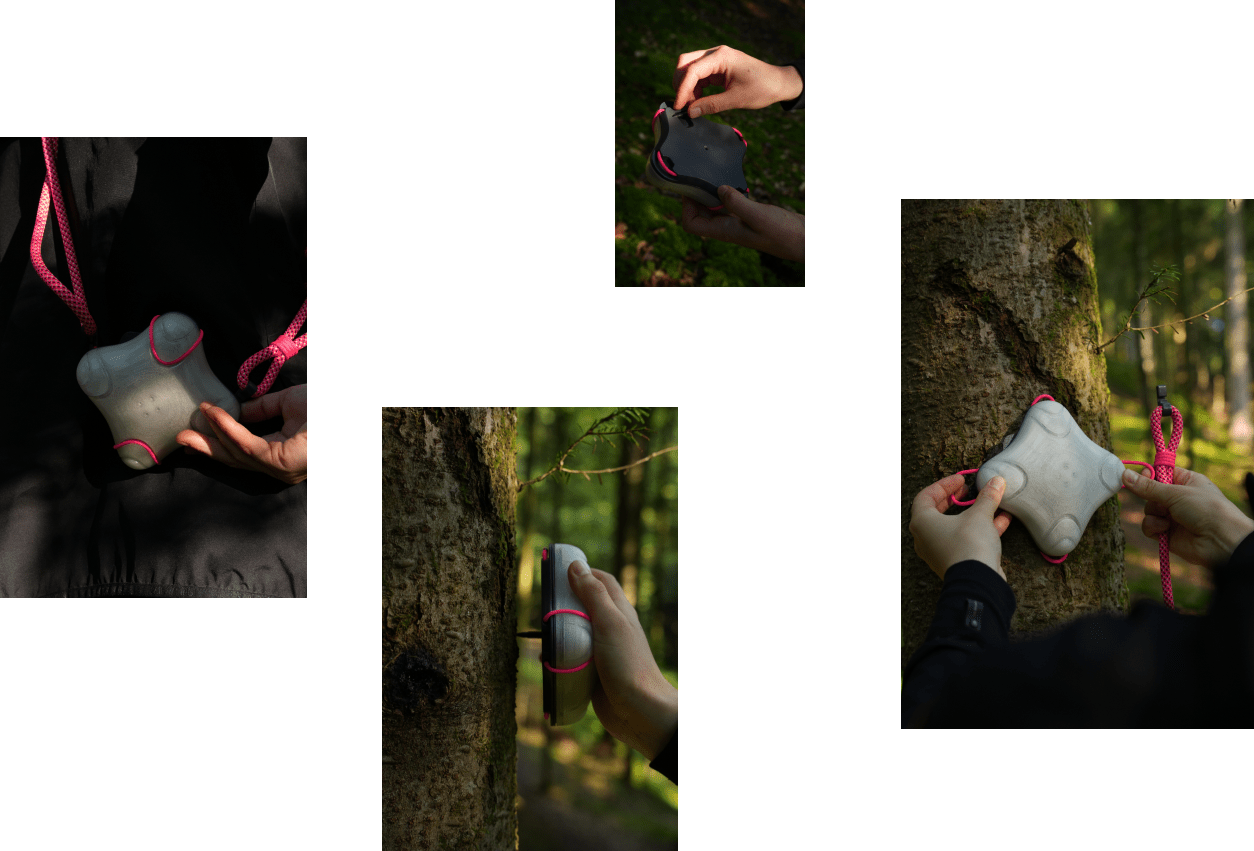
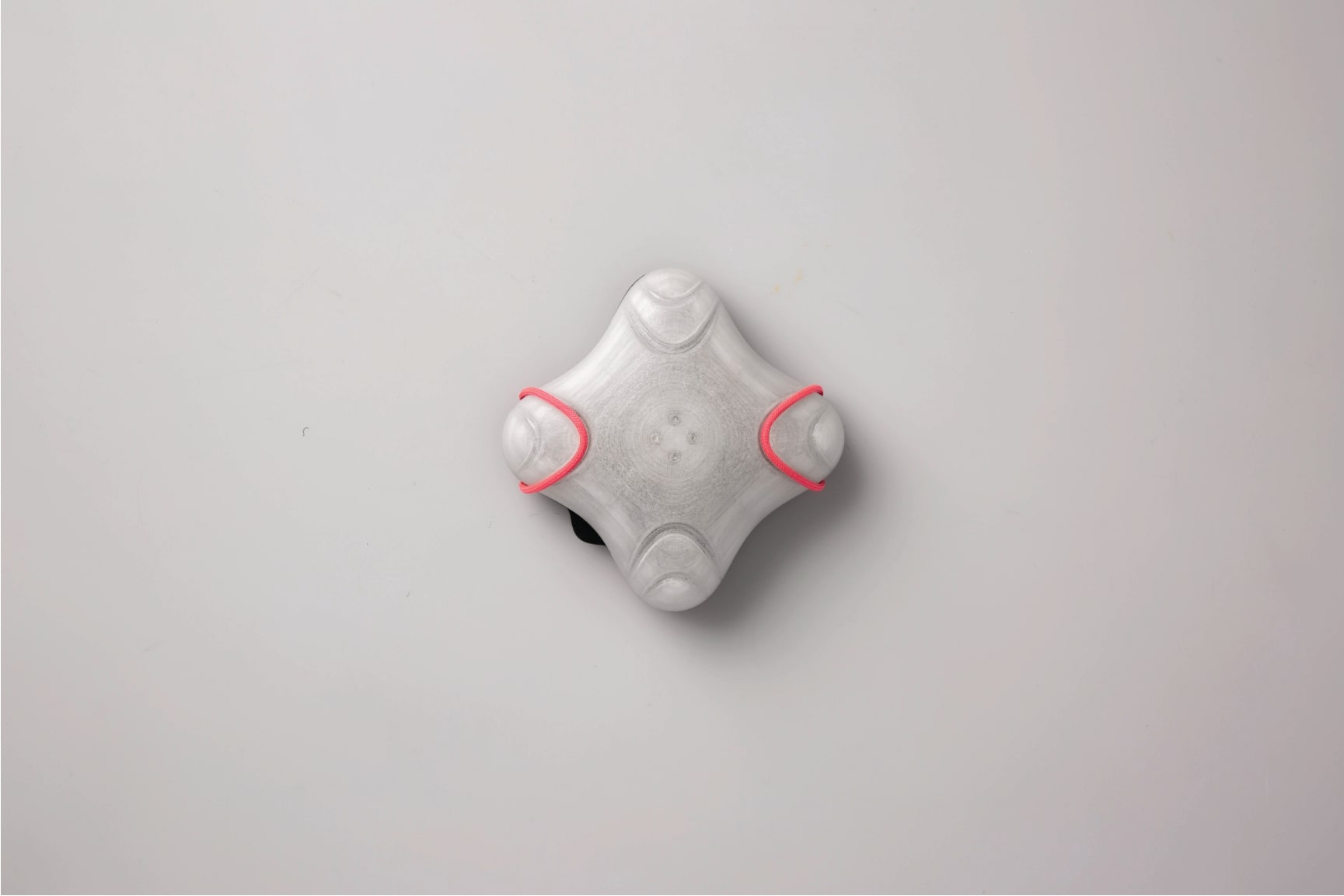
durable closing mechanism
hidden behind the shell, less inviting
for unauthorized removal.

amber's value lies in its
data connections, not its simple,
replaceable components.
